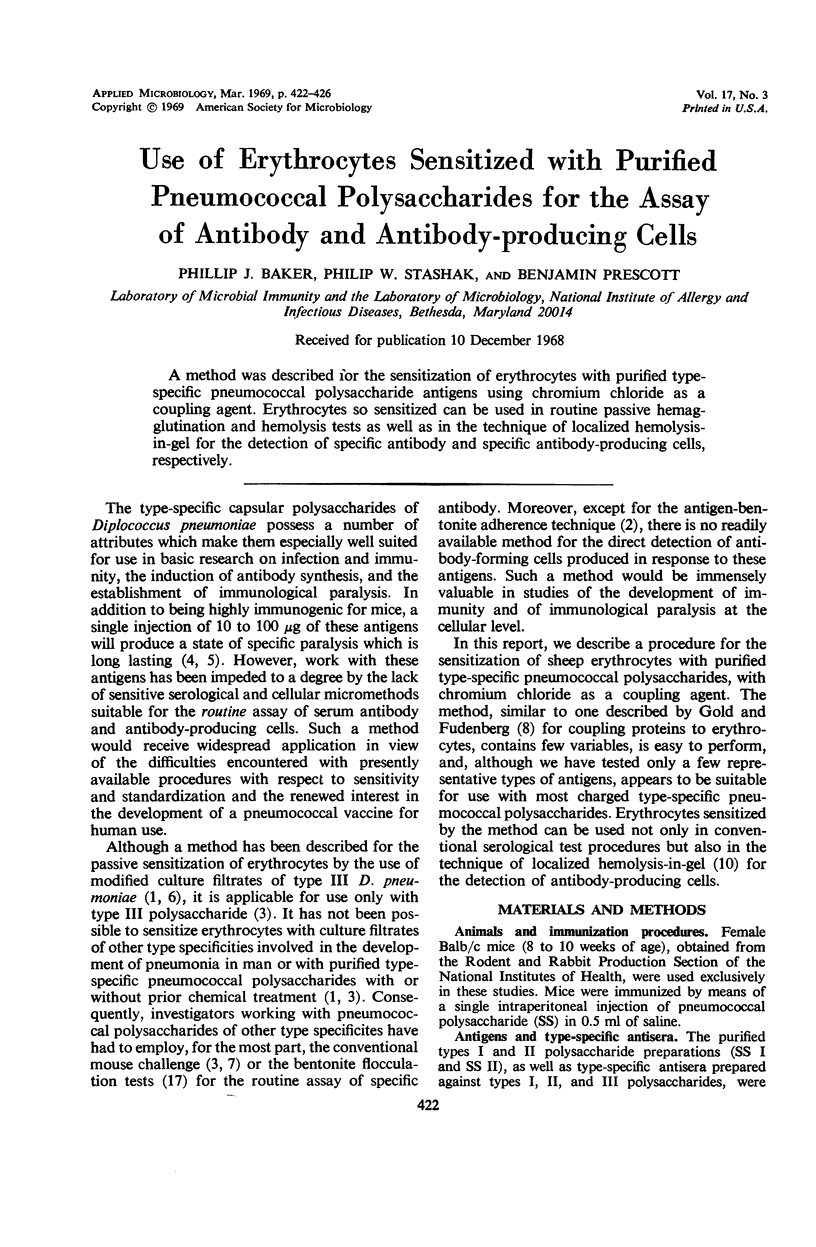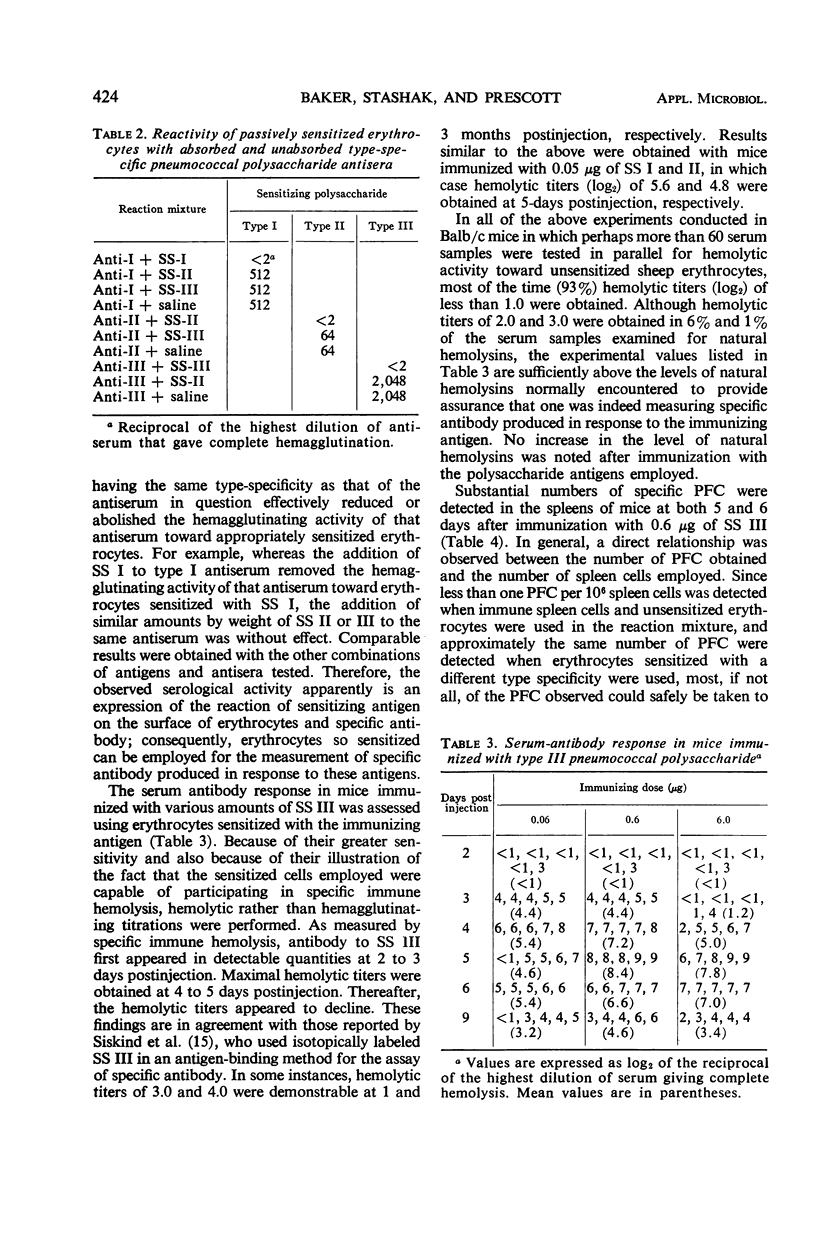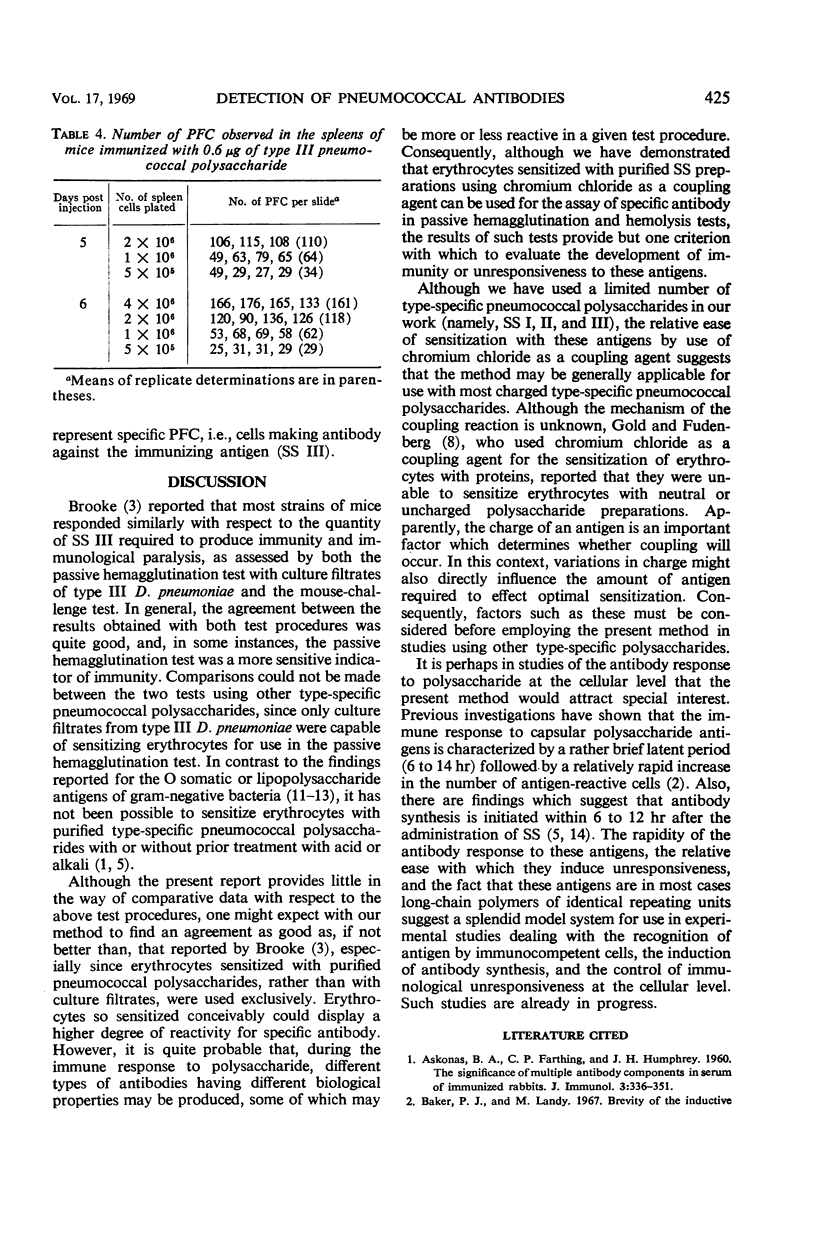Abstract
A method was described for the sensitization of erythrocytes with purified type-specific pneumococcal polysaccharide antigens using chromium chloride as a coupling agent. Erythrocytes so sensitized can be used in routine passive hemagglutination and hemolysis tests as well as in the technique of localized hemolysis-in-gel for the detection of specific antibody and specific antibody-producing cells, respectively.
Full text
PDF




Selected References
These references are in PubMed. This may not be the complete list of references from this article.
- ASKONAS B. A., FARTHING C. P., HUMPHREY J. H. The significance of multiple antibody components in serum of immunized rabbits. Immunology. 1960 Oct;3:336–351. [PMC free article] [PubMed] [Google Scholar]
- BROOKE M. S. BREAKING OF IMMUNOLOGICAL PARALYSIS BY INJECTION OF A SPECIFIC DEPOLYMERASE. Nature. 1964 Dec 26;204:1319–1320. doi: 10.1038/2041319a0. [DOI] [PubMed] [Google Scholar]
- Brooke M. S. A hemagglutination test and a specific depolymerase for studying immunologic paralysis in mice. J Immunol. 1966 Feb;96(2):358–363. [PubMed] [Google Scholar]
- Brooke M. S. Studies on the induction, specificity, prevention and breaking of immunologic paralysis and immunity to pneumococcal polysaccharide. J Immunol. 1966 Feb;96(2):364–372. [PubMed] [Google Scholar]
- DAVIES D. A., CRUMPTON M. J., MACPHERSON I. A., HUTCHISON A. M. The adsorption of bacterial polysaccharides by erythrocytes. Immunology. 1958 Apr;1(2):157–171. [PMC free article] [PubMed] [Google Scholar]
- FELTON L. D., KAUFFMANN G., PRESCOTT B., OTTINGER B. Studies on the mechanism of the immunological paralysis induced in mice by pneumococcal polysaccharides. J Immunol. 1955 Jan;74(1):17–26. [PubMed] [Google Scholar]
- Gold E. R., Fudenberg H. H. Chromic chloride: a coupling reagent for passive hemagglutination reactions. J Immunol. 1967 Nov;99(5):859–866. [PubMed] [Google Scholar]
- LANDY M., TRAPANI R. J., CLARK W. R. Studies on the O antigen of Salmonella typhosa. III. Activity of the isolated antigen in the hemagglutination procedure. Am J Hyg. 1955 Jul;62(1):54–65. doi: 10.1093/oxfordjournals.aje.a119766. [DOI] [PubMed] [Google Scholar]
- Landy M., Sanderson R. P., Jackson A. L. Humoral and cellular aspects of the immune response to the somatic antigen of Salmonella enteritidis. J Exp Med. 1965 Sep 1;122(3):483–504. doi: 10.1084/jem.122.3.483. [DOI] [PMC free article] [PubMed] [Google Scholar]
- NETER E. Bacterial hemagglutination and hemolysis. Bacteriol Rev. 1956 Sep;20(3):166–188. doi: 10.1128/br.20.3.166-188.1956. [DOI] [PMC free article] [PubMed] [Google Scholar]
- TAKATSY G. The use of spiral loops in serological and virological micro-methods. Acta Microbiol Acad Sci Hung. 1955;3(1-2):191–202. [PubMed] [Google Scholar]
- WOLFF S. M., WARD S. B., LANDY M. SEROLOGIC PROPERTIES OF BENTONITE PARTICLES COATED WITH MICROBIAL POLYSACCHARIDES. Proc Soc Exp Biol Med. 1963 Nov;114:530–536. doi: 10.3181/00379727-114-28724. [DOI] [PubMed] [Google Scholar]


